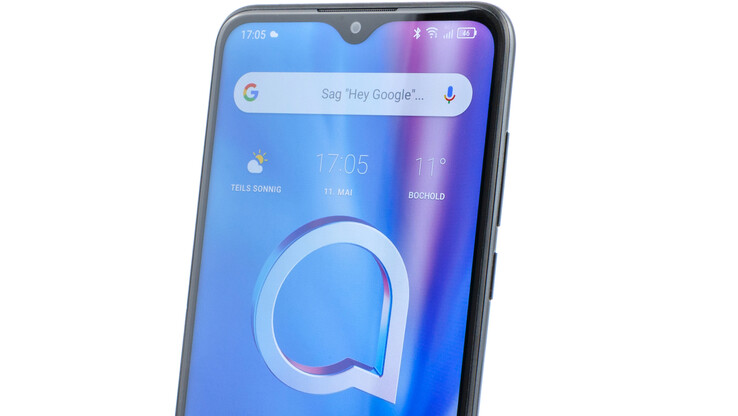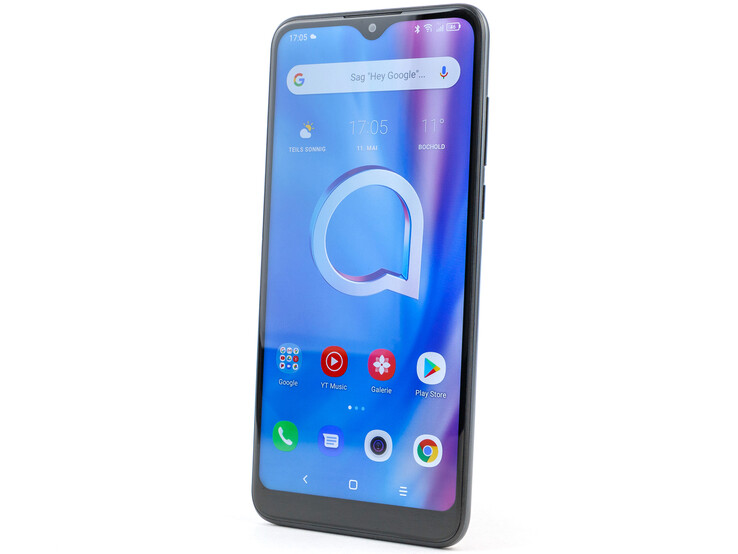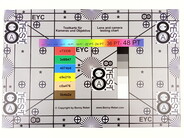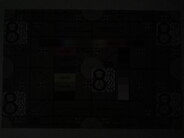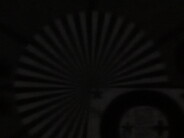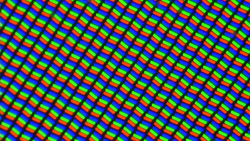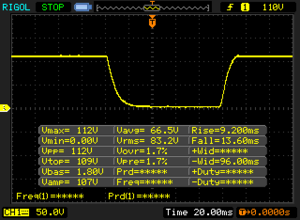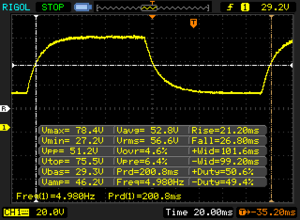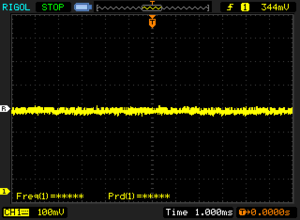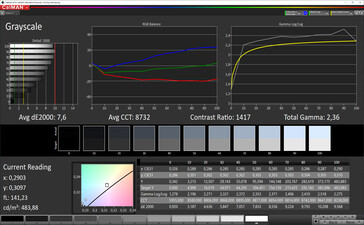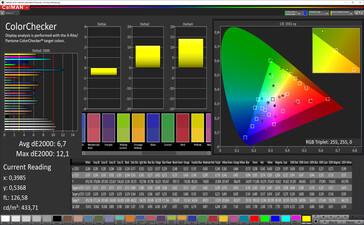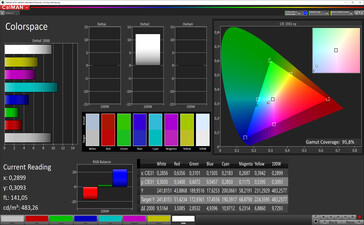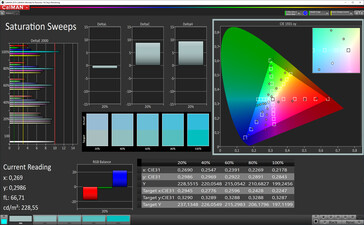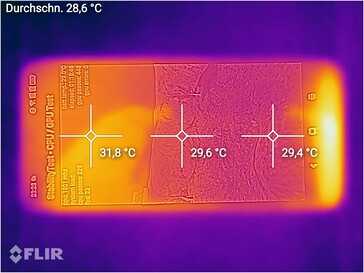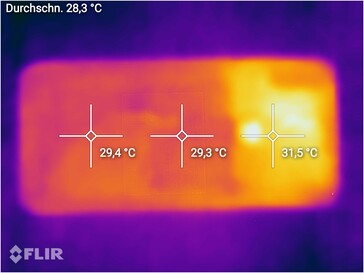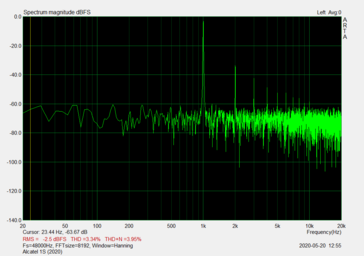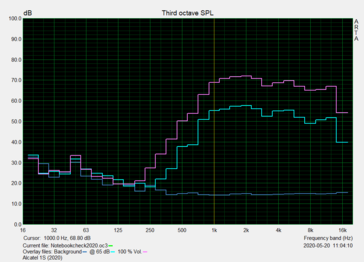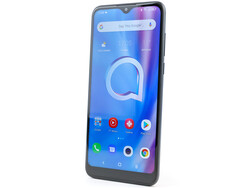Alcatel 1S (2020) Review - An Entry-level Smartphone with Strong Core Competencies
Comparison devices
Bewertung | Rating Version | Datum | Modell | Gewicht | Laufwerk | Groesse | Aufloesung | Preis ab |
|---|---|---|---|---|---|---|---|---|
| 74.6 % v7 (old) | v7 (old) | 06 / 2020 | Alcatel 1S (2020) Helio P22 MT6762, PowerVR GE8320 | 165 g | 32 GB eMMC Flash | 6.22" | 1520x720 | |
| 75.3 % v7 (old) | v7 (old) | 01 / 2020 | Huawei Y6s Helio P35 MT6765, PowerVR GE8300 | 150 g | 32 GB eMMC Flash | 6.09" | 1560x720 | |
| 68.3 % v7 (old) | v7 (old) | 05 / 2020 | Nokia 1.3 SD 215, Adreno 308 | 155 g | 16 GB eMMC Flash | 5.71" | 1520x720 | |
| 74.8 % v7 (old) | v7 (old) | 05 / 2020 | Motorola Moto E6s Helio P22 MT6762, PowerVR GE8320 | 160 g | 32 GB eMMC Flash | 6.10" | 1560x720 |
Case, features and operation - Alcatel 1S with good voice quality
The Alcatel 1S (2020) isn't quite light in the comparison field with 165 grams, but this is due to the larger battery. The housing is completely made of plastic and has a clean finish. The camera is just 0.3 millimetres higher than the rest of the back and the smartphone leaves a stable impression.
The Micro USB 2.0 port is used to transfer data and charge the Alcatel 1S. The hybrid card slot can accept either two nano-SIM cards or instead of the second SIM a microSD card, which even supports the exFAT file system. The dedicated Google Assistant key cannot be assigned to any other key. There is no notification LED.
As operating system Android 10 is used with a slightly adapted UI, which also includes the so-called Smart Manager, in order to be able to better manage the system resources. TCL also preinstalls some third-party apps, which can be uninstalled.
In the mobile network, the Alcatel smartphone covers all important frequencies for Europe, only 5G has to be dispensed with and LTE is not particularly fast with Cat. 4. Only the 2.4 GHz network can be used in WLAN networks. However, in combination with our reference router Netgear Nighthawk AX12, the 1S is comparatively fast and runs at stable data rates.
In terms of telephony features, the Alcatel 1S convinces with good voice quality when held to the ear. The handsfree speaker picks up voices very clearly, unfortunately, a quite strong hall is also created. The suppression of noise is quite successful in everyday life. The smartphone supports VoLTE, but WLAN calling was not available to us.
The input elements of the 1S are convincing. The touch screen reacts reliably and has good sliding properties. Although the physical keys have a short stroke, the soft pressure point is still clearly defined. For biometric security, a fingerprint scanner and a 2D face recognition system are available, both of which perform their services as reliably as possible.
| Networking | |
| iperf3 transmit AX12 | |
| Alcatel 1S (2020) | |
| Huawei Y6s | |
| Nokia 1.3 | |
| Motorola Moto E6s | |
| iperf3 receive AX12 | |
| Alcatel 1S (2020) | |
| Huawei Y6s | |
| Nokia 1.3 | |
| Motorola Moto E6s | |
Cameras - Triple camera with ultra wide angle and macro
The front camera illuminates the subject well if there is enough light, but weakens the details and focus. For video telephony, however, the optics are more than adequate.
The main camera offers an additional ultra wide angle and a macro lens. All three cameras certainly don't meet the demands of ambitious amateur photographers, but for an occasional snapshot in everyday life the offered performance is sufficient. Somewhat disturbing is the weak performance in very bright ambient light.
Image comparison
Choose a scene and navigate within the first image. One click changes the position on touchscreens. One click on the zoomed-in image opens the original in a new window. The first image shows the scaled photograph of the test device.
NahaufnahmePanoramaLow-LightZoom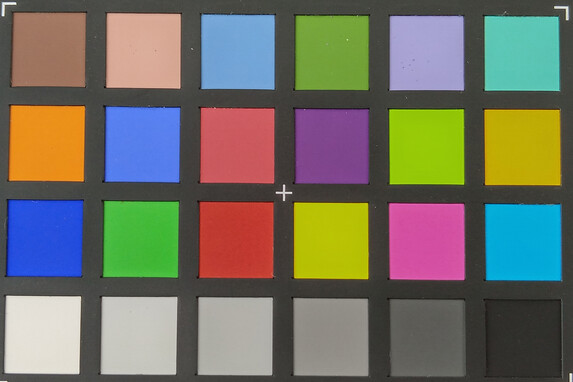
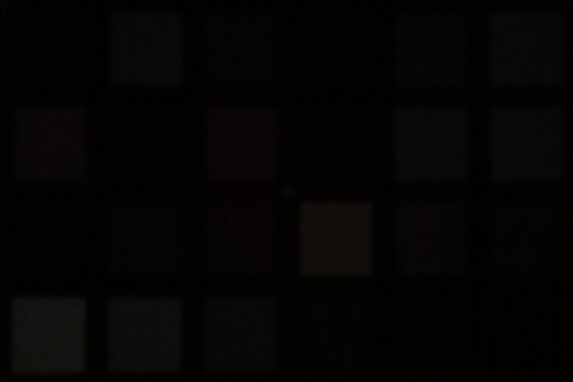
Display - Alcatel 1S without brightness sensor
The 6.22 inch IPS panel of the Alcatel 1S (2020) is on a quite class-typical level and delivers a sufficiently high image sharpness with its small HD resolution. On closer inspection, however, pixel formation may be visible.
The brightness is on a decent level, unfortunately, the Alcatel cell phone doesn't have an ambient light sensor. The measurement with an even distribution of light and dark areas (APL50) also turns out worse and the 1S only achieves a luminance of 351 cd/m² in the center of the image and also the black level (0.41 cd/m²) is lower, so that the contrast ratio is reduced to 856:1.
The color display we analyzed with CalMAN is too cool and shows visible deviations for the trained eye with some blue tones. However, these are not serious or disturbing in everyday life.
| |||||||||||||||||||||||||
Brightness Distribution: 87 %
Center on Battery: 470 cd/m²
Contrast: 1424:1 (Black: 0.33 cd/m²)
ΔE ColorChecker Calman: 6.7 | ∀{0.5-29.43 Ø4.78}
ΔE Greyscale Calman: 7.6 | ∀{0.09-98 Ø5}
95.8% sRGB (Calman 2D)
Gamma: 2.36
CCT: 8732 K
| Alcatel 1S (2020) IPS, 1520x720, 6.2" | Huawei Y6s IPS, 1560x720, 6.1" | Nokia 1.3 IPS, 1520x720, 5.7" | Motorola Moto E6s IPS, 1560x720, 6.1" | |
|---|---|---|---|---|
| Response Times | -27% | -15% | -19% | |
| Response Time Grey 50% / Grey 80% * (ms) | 48 ? | 54 ? -13% | 55 ? -15% | 64 ? -33% |
| Response Time Black / White * (ms) | 22.8 ? | 32 ? -40% | 26 ? -14% | 24 ? -5% |
| PWM Frequency (Hz) | 100 ? | |||
| Screen | -7% | 6% | 22% | |
| Brightness middle (cd/m²) | 470 | 424 -10% | 456 -3% | 488 4% |
| Brightness (cd/m²) | 456 | 397 -13% | 406 -11% | 481 5% |
| Brightness Distribution (%) | 87 | 85 -2% | 83 -5% | 95 9% |
| Black Level * (cd/m²) | 0.33 | 0.35 -6% | 0.33 -0% | 0.25 24% |
| Contrast (:1) | 1424 | 1211 -15% | 1382 -3% | 1952 37% |
| Colorchecker dE 2000 * | 6.7 | 6.45 4% | 5.22 22% | 5.02 25% |
| Colorchecker dE 2000 max. * | 12.1 | 12.76 -5% | 8.38 31% | 8.99 26% |
| Greyscale dE 2000 * | 7.6 | 8.5 -12% | 6.4 16% | 4.4 42% |
| Gamma | 2.36 93% | 2.231 99% | 2.186 101% | 2.252 98% |
| CCT | 8732 74% | 9108 71% | 8108 80% | 7841 83% |
| Total Average (Program / Settings) | -17% /
-11% | -5% /
2% | 2% /
13% |
* ... smaller is better
Display Response Times
| ↔ Response Time Black to White | ||
|---|---|---|
| 22.8 ms ... rise ↗ and fall ↘ combined | ↗ 9.2 ms rise | |
| ↘ 13.6 ms fall | ||
| The screen shows good response rates in our tests, but may be too slow for competitive gamers. In comparison, all tested devices range from 0.1 (minimum) to 240 (maximum) ms. » 50 % of all devices are better. This means that the measured response time is worse than the average of all tested devices (20.2 ms). | ||
| ↔ Response Time 50% Grey to 80% Grey | ||
| 48 ms ... rise ↗ and fall ↘ combined | ↗ 21.2 ms rise | |
| ↘ 26.8 ms fall | ||
| The screen shows slow response rates in our tests and will be unsatisfactory for gamers. In comparison, all tested devices range from 0.165 (minimum) to 636 (maximum) ms. » 82 % of all devices are better. This means that the measured response time is worse than the average of all tested devices (31.6 ms). | ||
Screen Flickering / PWM (Pulse-Width Modulation)
| Screen flickering / PWM not detected | |||
In comparison: 53 % of all tested devices do not use PWM to dim the display. If PWM was detected, an average of 8111 (minimum: 5 - maximum: 343500) Hz was measured. | |||
Performance, emissions and battery life
The Alcatel 1S (2020) is driven by a Helio P22 from MediaTek, whose GPU has been throttled by 50 MHz in direct comparison to the standard version, which doesn't always lead to a worse result in the benchmarks, though. The system as such runs quite smoothly, but with short waiting times when starting apps or small jerking must be arranged.
The surface temperatures stay pleasantly low in idle and even under load the rates only climb over the 30 degree mark in places.
The mono speaker on the bottom edge delivers a high-frequency sound and the maximum volume is not too high, but both are perfectly sufficient for everyday tasks. The jack connector provides a usable sound output, but its signal-to-noise ratio is not particularly high at 30 dBFS.
The Alcatel 1S (2020) sets a powerful exclamation mark in the battery life, because the smartphone proves to be very efficient with over 20 hours in our WLAN test.
| PCMark for Android | |
| Work performance score (sort by value) | |
| Huawei Y6s | |
| Nokia 1.3 | |
| Motorola Moto E6s | |
| Average Mediatek Helio P22 MT6762 (4404 - 7465, n=18) | |
| Work 2.0 performance score (sort by value) | |
| Alcatel 1S (2020) | |
| Huawei Y6s | |
| Nokia 1.3 | |
| Motorola Moto E6s | |
| Average Mediatek Helio P22 MT6762 (3805 - 5380, n=21) | |
| GFXBench | |
| on screen Aztec Ruins Normal Tier Onscreen (sort by value) | |
| Alcatel 1S (2020) | |
| Huawei Y6s | |
| Motorola Moto E6s | |
| Average Mediatek Helio P22 MT6762 (6.4 - 7.6, n=21) | |
| Average of class Smartphone (6.2 - 166, n=211, last 2 years) | |
| 1920x1080 Aztec Ruins Normal Tier Offscreen (sort by value) | |
| Alcatel 1S (2020) | |
| Huawei Y6s | |
| Motorola Moto E6s | |
| Average Mediatek Helio P22 MT6762 (3.5 - 4.7, n=21) | |
| Average of class Smartphone (3.4 - 367, n=211, last 2 years) | |
| on screen Aztec Ruins High Tier Onscreen (sort by value) | |
| Alcatel 1S (2020) | |
| Huawei Y6s | |
| Motorola Moto E6s | |
| Average Mediatek Helio P22 MT6762 (4.1 - 4.8, n=21) | |
| Average of class Smartphone (0.85 - 144, n=212, last 2 years) | |
| 2560x1440 Aztec Ruins High Tier Offscreen (sort by value) | |
| Alcatel 1S (2020) | |
| Huawei Y6s | |
| Motorola Moto E6s | |
| Average Mediatek Helio P22 MT6762 (1.3 - 1.6, n=21) | |
| Average of class Smartphone (1.2 - 129, n=211, last 2 years) | |
| Alcatel 1S (2020) | Huawei Y6s | Nokia 1.3 | Motorola Moto E6s | Average 32 GB eMMC Flash | Average of class Smartphone | |
|---|---|---|---|---|---|---|
| AndroBench 3-5 | 7% | 16% | 20% | 1% | 1111% | |
| Sequential Read 256KB (MB/s) | 273.3 | 263.2 -4% | 284.8 4% | 275 1% | 242 ? -11% | 2226 ? 714% |
| Sequential Write 256KB (MB/s) | 146 | 118 -19% | 48.5 -67% | 103.5 -29% | 100.5 ? -31% | 1848 ? 1166% |
| Random Read 4KB (MB/s) | 26.57 | 46.7 76% | 48.7 83% | 69.4 161% | 43.1 ? 62% | 295 ? 1010% |
| Random Write 4KB (MB/s) | 20.27 | 18.6 -8% | 38.6 90% | 17.7 -13% | 22.3 ? 10% | 335 ? 1553% |
| Sequential Read 256KB SDCard (MB/s) | 82 ? | 80.9 ? -1% | 76.1 ? -7% | 82.3 ? 0% | 71.8 ? -12% | |
| Sequential Write 256KB SDCard (MB/s) | 62.4 ? | 60.6 ? -3% | 59 ? -5% | 63.5 ? 2% | 52.9 ? -15% |
Temperature
(+) The maximum temperature on the upper side is 31.4 °C / 89 F, compared to the average of 35.2 °C / 95 F, ranging from 21.9 to 247 °C for the class Smartphone.
(+) The bottom heats up to a maximum of 29.3 °C / 85 F, compared to the average of 34 °C / 93 F
(+) In idle usage, the average temperature for the upper side is 25.4 °C / 78 F, compared to the device average of 32.9 °C / 91 F.
Alcatel 1S (2020) audio analysis
(±) | speaker loudness is average but good (80.8 dB)
Bass 100 - 315 Hz
(-) | nearly no bass - on average 41% lower than median
(+) | bass is linear (6.1% delta to prev. frequency)
Mids 400 - 2000 Hz
(±) | reduced mids - on average 9.4% lower than median
(±) | linearity of mids is average (9.4% delta to prev. frequency)
Highs 2 - 16 kHz
(+) | balanced highs - only 2.7% away from median
(+) | highs are linear (3.5% delta to prev. frequency)
Overall 100 - 16.000 Hz
(-) | overall sound is not linear (31.1% difference to median)
Compared to same class
» 80% of all tested devices in this class were better, 3% similar, 17% worse
» The best had a delta of 11%, average was 35%, worst was 134%
Compared to all devices tested
» 89% of all tested devices were better, 2% similar, 8% worse
» The best had a delta of 4%, average was 24%, worst was 134%
Motorola Moto E6s audio analysis
(+) | speakers can play relatively loud (82.3 dB)
Bass 100 - 315 Hz
(-) | nearly no bass - on average 66.5% lower than median
(+) | bass is linear (0% delta to prev. frequency)
Mids 400 - 2000 Hz
(-) | nearly no mids - on average 66.5% lower than median
(+) | mids are linear (0% delta to prev. frequency)
Highs 2 - 16 kHz
(-) | nearly no highs - on average 66.5% lower than median
(+) | highs are linear (0% delta to prev. frequency)
Overall 100 - 16.000 Hz
(-) | overall sound is not linear (121.9% difference to median)
Compared to same class
» 91% of all tested devices in this class were better, 7% similar, 2% worse
» The best had a delta of 11%, average was 35%, worst was 134%
Compared to all devices tested
» 97% of all tested devices were better, 2% similar, 1% worse
» The best had a delta of 4%, average was 24%, worst was 134%
Battery life
| Alcatel 1S (2020) 4000 mAh | Huawei Y6s 3020 mAh | Nokia 1.3 3000 mAh | Motorola Moto E6s 3000 mAh | Average of class Smartphone | |
|---|---|---|---|---|---|
| Battery Runtime | |||||
| WiFi Websurfing (h) | 20.4 | 12.4 -39% | 15.1 -26% | 13.4 -34% | 19.3 ? -5% |
Pros
Cons
Conclusion - Good beginner with a small shortcoming
With the Alcatel 1S (2020) TCL offers a successful entry-level smartphone, which is particularly convincing in the core competencies telephony and battery life. The system performance and memory equipment are quite good for this price range. There is also a dedicated button for the Google Assistant and a radio receiver.
With the Alcatel 1S (2020), TCL has succeeded in creating a successful overall package in the entry-level class.
Some compromises have to be made, especially during camera setup. The additional ultra wide angle and macro lenses are useful additions, but the quality of the main camera is a little lacking.
We see the missing ambient light sensor as an equipment gap, but those who prefer to regulate their display manually anyway won't mind.
Alcatel 1S (2020)
- 06/17/2020 v7 (old)
Daniel Schmidt




